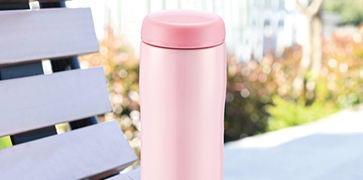The reason why the insulation cup can be kept warm, this insulation principle is in fact consistent with the principle of thermos insulation used at home. The inner liner of the water bottle is double-layered, and the careful person will notice a small "tip" at the bottom when buying a new bottle. "When the tip is broken, the water bottle is not insulated." This is often a "truth" that the experienced mother has summed up. In fact, whether the water bottle is insulated or not is really related to this structure.
Zhejiang Yongkang Haobang Cup Industry Co., Ltd. specializes in the production of thermal insulation cup series products, focusing on quality, and has rich experience in the production of vacuum flasks. Now tell everyone that the reason why the insulation cups are insulated is the ‘vacuum heat-breaking’ technology. Originally, the thermos cup and the thermos are double-layered hollow structure. The inner and outer tubes are made of stainless steel. The difference is that after the cup is removed from the air, it will be placed at the bottom of the cup before sealing with the glass seal. A layer of carbon particles, through a high temperature of 500 degrees, allows the carbon particles to be fully burned, so that the air in the hollow portion is exhausted, achieving an almost complete vacuum effect. It is well known that heat transfer requires a medium, and for three ways of heat transfer, where heat radiation can be carried out in a vacuum. Therefore, in order to further enhance the thermal insulation effect, the manufacturer will coat a layer of copper or aluminum on the outer wall of the inner tube to form a smooth reflective surface, and reflect the heat radiated from the inner tube of the cup into the cup. Then the same reason can explain that once the “tip” at the bottom of the liner of the domestic hot water bottle is broken, the intermediate vacuum effect is lost, and the heat can not be insulated, and the silver plating of the bottle is the same as the principle of copper or aluminum plating in the inner tube of the vacuum flask. of.

